Here at The Dispatch, we’re dedicated to cultivating the next generation of thinkers and leaders—that’s why we’re proud to provide low-cost, high-quality Dispatch memberships to students looking to stay informed, think critically, and better engage with the world around them
With your help, we can offer these students free Dispatch memberships and ensure they’re engaging with content that promotes the core values that make our country great—individual liberty, pluralism, patriotism, and capitalism.
Your support can help provide a new wave of young conservatives with better journalism, more thoughtful dialogue, and—hopefully—a brighter outlook on our future.
Happy Wednesday! On news that President Donald Trump is considering a pardon for Epstein-associate Ghislaine Maxwell, right-wing activist Laura Loomer took to X, warning him “Do not do it. There will be no coming back from that.” Words we never expected to write: We agree with Laura Loomer.
Quick Hits: Today’s Top Stories
- In a report citing unnamed administration officials, Axios reported Tuesday that a draft of a White House memo stipulates that the federal government is not required to compensate federal employees who have been furloughed during the shutdown for back pay. While President Donald Trump signed an executive order in 2019 to guarantee back pay for furloughed federal workers during federal shutdowns, according to one official, “Our view is: No, it doesn’t” require that. When asked whether the federal employees would get back pay, Trump said that it “depends” on the worker, and that “some people that really don’t deserve to be taken care of, and we’ll take care of them in a different way.” Meanwhile, several states—including Colorado, Tennessee, Utah, and West Virginia—have reallocated state funds to keep their state’s national parks open during the shutdown.
- The European Union announced on Tuesday that it will double its tariff on foreign steel from 25 to 50 percent, the same duty rate that Trump set in late May for all imported steel to the U.S. While the EU allows a certain quantity per country of foreign steel to enter duty-free, the European Commission cut the U.S. import levels by 47 percent on Tuesday to 18.3 million tons. “Global overcapacity is damaging our industry,” European Commission President Ursula von der Leyen said in a statement. “The Commission will continue working with industry to protect and create good jobs.”
- White House special envoy to the Middle East Steve Witkoff and Trump son-in-law Jared Kushner departed for Egypt on Tuesday to participate in Israel-Hamas ceasefire and hostage release negotiations. Both Witkoff and Kushner were key designers in the Trump-proposed 20-point plan, a rough outline for a deal that Hamas leaders accepted last week, with conditions, and pending finalization. An unnamed senior U.S. official reportedly told the Times of Israel that the pair would not leave until a formal deal is secured.
- Trump said on Monday that he has “sort of made a decision” on whether to supply Ukraine with U.S.-manufactured Tomahawk cruise missiles, which have a range of more than 1,500 miles, without specifying what he decided. He would “want to find out what they’re doing with them,” and added, “Where are they sending them? I guess I’d have to ask that question.” Unnamed Ukrainian sources told Axios after Trump’s remarks that they were not informed of what Trump decided. Russian President Vladimir Putin said on Sunday that a gift of U.S.-made Tomahawk missiles to Ukraine “will lead to the destruction of our relations, or at least the positive trends that have emerged in these relations.” Meanwhile, on Tuesday, Ukraine transferred $44 million in frozen funds from Prominvestbank, a subsidiary of a Russian state-owned bank now owned by Ukraine following U.S. sanctions. Also on Tuesday, a Ukrainian drone strike attacked areas in its Zaporizhzhia Oblast, partially occupied by Russian forces, temporarily knocking out electricity in the region.
- A new report published Tuesday by ChatGPT owner OpenAI found that foreign actors are increasingly using AI tools for operations, ranging from propaganda campaigns to cybercrime and scams. The report identified chatbot users from ChatGPT and competitors, including the Chinese-based DeepSeek, that attempted various schemes. OpenAI banned users it said were associated with the Chinese government, as well as several accounts that requested the chatbot monitor specific social media conversations. Additionally, it banned Russian-based suspected criminal enterprises that used the tool to develop malware. “Repeatedly, and across different types of operations, the threat actors we banned were building AI into their existing workflows, rather than building new workflows around AI,” the report said.
- American professors John Clarke, Michel H. Devoret, and John M. Martinis were awarded the Nobel Prize in Physics for experiments demonstrating two core principles of quantum mechanics, tunneling, and quantized energy levels on a system visible to the naked eye. Their work showed that quantum effects, once thought to exist just at the atomic scale, could occur in a circuit large enough to hold in one’s hand. Their discoveries bridged the gap between the quantum and visible worlds, laying the foundation for technologies such as quantum computers, sensors, and cryptography.
- Four people, including a child, died after a boat carrying migrants sank off the coast of the Greek island of Lesbos on Tuesday, according to the country’s coast guard. In total, 34 survivors made it to shore on their own and were found by police. It was not immediately clear what had caused the sinking, nor were the nationalities of the survivors or victims immediately clear.
- Danish Prime Minister Mette Frederiksen pushed for new social media restrictions Tuesday, including a ban on accounts for users under 15 years old, with some exceptions for parental consent. “Mobile phones and social media are stealing our children’s childhood,” she said in a speech to the Danish parliament. “I hope that you here in the chamber will help tighten the law so that we take better care of our children here in Denmark.” While she did not elaborate on specific regulatory proposals, Frederiksen indicated that such restrictions would allow prospective and current users 13 years old and older, with parental permission, to have social media accounts. The push comes after Australia’s parliament passed a bill in November 2024 blocking social media access for users under 16 years old.
- A council of Georgia prosecutors tasked with finding a replacement for Fulton County District Attorney Fani Willis to lead the election interference case against Trump asked a judge on Tuesday for a 90-day extension. Judge Scott McAfee gave the council 14 days to pick Willis’ successor on Friday, after the state Supreme Court upheld a lower court’s ruling barring Willis from the case due to a previous relationship with lead prosecutor Nathan Wade. McAfee had said at the time that if the council missed the deadline without naming a replacement, the case would be dismissed. However, the council wrote in court filings it needs extra time because of “the complexity of this case and the vast personnel and resources required to handle a case of this nature.”
- FBI Director Kash Patel announced on X on Tuesday that he had dismantled the bureau’s CR-15 public corruption unit following a Fox News report that suggested agents had monitored communications of nearly a dozen Republican senators during the Department of Justice’s investigation into the January 6, 2021, Capitol attack. Patel promised additional accountability measures, said that he had fired several agents, and claimed that the bureau had launched an ongoing investigation into the “baseless monitoring.”
Droning On
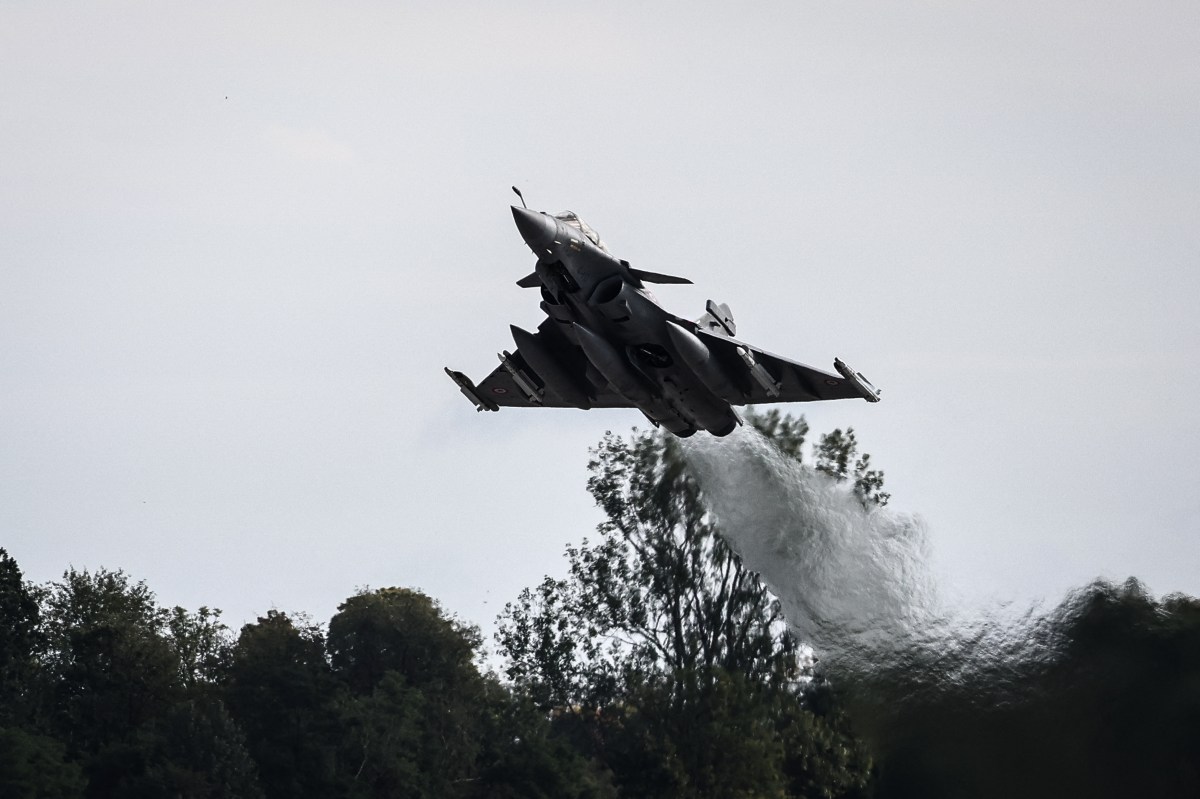
On September 9, at least 19 Russian drones flew into Polish airspace, causing the country to invoke NATO’s collective defense treaty and forcing Dutch fighter jets to scramble. Four drones were shot down. Over the next week, Russian military drones were spotted over Romanian, Estonian, and Latvian airspace, with air defense systems going on alert. On September 22, unidentified drones flying overhead resulted in the shutdown of the airport in Copenhagen for four hours, and Danish authorities said that they could not rule out Russian involvement. And last weekend, multiple drones flew over Germany, disrupting travel for tens of thousands of travelers at Munich’s airport. German Chancellor Friedrich Merz said his “assumption” was that Russia sent them.
Over the past month, Russia has stepped up its campaign of provocative incursions into European airspace, intimidating civilians, and disrupting ordinary life. In response, Europe’s leadership is talking tough. “Europe must fight,” European Commission President Ursula von der Leyen declared during her State of the Union speech in Strasbourg, France, last month. “For its place in a world in which many major powers are either ambivalent or openly hostile to Europe.” The European Parliament began this morning’s session with a debate about how best to tackle the issue.
As a non-paying reader, you are receiving a truncated version of The Morning Dispatch. You can read our full item in the members-only version of TMD.
Fighting would presumably include repelling Russian drone incursions. During her speech, von der Leyen endorsed the idea of a “drone wall,” made up of radar systems and anti-aircraft weapons, that would intercept Russian drones and protect the whole continent. NATO Secretary General Mark Rutte called the idea “timely and necessary,” and at a September 30 meeting in Copenhagen, a number of European leaders threw their weight behind ramping up Europe’s drone defense capabilities.

But securing Europe’s massive border with Russia may be too tall an order. “I’m not sure that Europe is ready for this from a financial, technological, and organizational standpoint,” Kateryna Bondar, a fellow at the Center for Strategic and International Studies and a former adviser to the Ukrainian government, told TMD.
Bondar noted that the logistics of a true drone wall are staggering: hundreds of radar units and electronic jammers spread across at least the five countries—Norway, Finland, Latvia, Lithuania, and Poland—that share a border with Russia, massive amounts of power generation required to maintain such a system, and a workforce to operate it. That’s before getting NATO, the EU, specific countries, and local governments to all agree on the specifics of the project.
Additionally, many of the drones likely used in some of Russia’s provocations are extremely difficult to intercept. Zachary Kallenborn, an expert on drone warfare who advises the U.S. government and defense companies, told TMD that the exact type of drone is crucial to answering the question of how to intercept it.
Medium- to large-sized drones powered by propellers, such as the Russian Geran (a copy of the Iranian Shahed drone), are relatively simple to detect and shoot down. Even when Russia launches mass attacks against Ukraine using hundreds of these types of drones, Ukrainian defenders are regularly able to intercept more than 90 percent of them. But reliably detecting and intercepting small drones, like the ones that caused airport shutdowns in Europe, is “not a feasible thing,” said Kallenborn.
These drones—often called First Person View (FPV) drones because they are piloted using a camera mounted on the drone’s body—are usually small enough to fit in a backpack and fly with quiet motors. The ones used in Europe were almost certainly unarmed, although small drones can be used to carry explosives.
“You can literally sit outside of the parliament building in Poland or wherever, and more or less pull it out of your backpack and throw it up in the air,” Kallenborn said. “You’re not blocking those.”
At least not with radar and jamming technology. This summer, the Ukrainian government announced a program that would pay citizens enrolled in local defense units up to $2,400 a month (a hefty sum in Ukraine) for shooting down Russian drones. Local teams are using hunting rifles, cars, and World War II-era machine guns to bring down Russian drones that threaten critical infrastructure like power stations and hospitals.
Another strategy is to harden buildings, using a tried-and-true technology: the humble net. Roads and houses near the Ukrainian front line are increasingly covered with shrouds of repurposed fishing nets, designed to tangle up smaller drones.
Low-tech methods such as these aim to address one of the most significant problems facing anti-drone efforts: It is far more expensive to shoot down a drone than to launch one. When NATO forces shot down Russian drones over Poland last month, they were using missiles that cost millions of dollars to destroy drones whose price tags were in the tens of thousands.
But simple countermeasures, while relatively easy to deploy quickly, are hardly a solution. They’re necessarily patchy and struggle to remain effective with larger or faster drones. More comprehensive measures—whether they be directed energy weapons (lasers) that are costly to build but dirt-cheap to fire, inexpensive anti-air missiles, or mass-produced interceptor drones—will take years to implement. Ukraine makes thousands of interceptor drones per month, but expanding production to other countries would take significant investment.
Some European leaders are already trying to temper expectations. “Drones and anti-drones are the priority,” French President Emmanuel Macron said last week. “But we have to be clear: There is no perfect wall for Europe. We’re speaking about a 3,000-kilometer border. Do you think it’s totally feasible? The answer is ‘no.’”
In what’s becoming an increasingly prominent pattern in European defense planning, countries located farther away from Russia are more hesitant to spend money on threats to the frontier. While leaders from Latvia and Lithuania last week pushed for a plan that could be implemented within a year, German Defense Minister Boris Pistorius has said that an anti-drone network won’t be completed “in the next three to four years.” Italian Prime Minister Giorgia Meloni said earlier this year that “we must remember that the boundaries of the alliance are very large, so if we make the mistake of looking only to the side and forget, for example, that there is a southern flank, we risk not being decisive.” At the same meeting, Spanish Prime Minister Pedro Sanchez avoided discussing specific defense spending commitments. However, he did note that combating climate change is a “security aspect [that] will also be incorporated by the government of Spain in this debate.”
Financing and production are also major unanswered questions. The EU agreed to authorize 800 billion euros (U.S. $930 billion ) worth of defense spending in a landmark decision earlier this year, but only 150 billion of that (U.S. $174 billion) will come out of the bloc’s collective funds—the rest will have to come from individual members that have their own spending priorities and may not have extensive drone-building capabilities.
However, even if a drone wall is more a slogan than a realizable plan, there are political and diplomatic benefits for European leaders in endorsing it, Kallenborn noted. “It’s more about communicating a message to Russia that we don’t like that you’re doing this, we’re taking it seriously, and we’re prepared to respond,” while stopping short of military retaliation, he said. It also demonstrates to frightened European populations that their governments are taking action, Kallenborn argued. That sort of political strategy has precedent: In World War II, British anti-aircraft batteries were amassed in London to boost morale, while also attempting to shoot down German planes.
At the very least, Russia is displeased by the recent statements of European politicians. “As history has shown, erecting walls is always a bad thing,” Russian spokesman said Dmitry Peskov last week.
But the flurry of statements over the past week has yet to yield concrete spending commitments or a clear plan to revamp Europe’s defense production efforts, while still demonstrating clear differences between countries on priorities and strategy.
With those challenges in mind, Bondar was pessimistic about the drone wall’s prospects: “I think they’ll spend more time on discussions and being deeply concerned, rather than start actually building something.”
Today’s Must-Read
In the weeks since the Kirk assassination, Utah Gov. Spencer Cox has been widely praised for rising to the occasion in the wake of a national tragedy that occurred in his state. In a pair of press conferences following the assassination, the Utah governor spoke with moral clarity about both the human tragedy of the murder of a young father and how it struck at the foundational rights of all Americans. Cox pointed to Kirk’s willingness to engage in debate and Kirk’s own words imploring Americans to forgive and eschew violence as an example to live by. Part of what made Cox’s remarks so remarkable was what he didn’t say. He dispensed with the platitude that it’s a given that America’s brightest days are ahead. He didn’t pretend to be the leader—or that there is any leader—who was going to save us.
Toeing the Company Line
The Gray Zone
When crimes aren’t punished and noncrimes are.
When You Outsource Friendship to AI
A lot of problems can be solved in conversation—with people.
DHS Says Videotaping ICE Agents Is Illegal. Federal Courts Disagree.
Filming law enforcement serves important goals central to a free republic.
Mad About Politics? Blame Congress.
The judiciary isn’t supposed to be the primary check on the executive, the legislative branch is.
Eternal Vigilance | Interview: Jay Nordlinger
‘If they lay down their arms, we’ll have peace tomorrow. If we lay down our arms, there’ll be no Israel tomorrow.’
Worth Your Time
- Tech CEOs are not the most beloved bunch but Avi Schiffmann—the 22-year-old founder of the wearable AI social pendant, “Friend”—may top the list. Many people hate his parasocial artificial-intelligence product; the 10,000 posters of his New York City subway ad campaign are now covered in graffiti; and his X replies are filled with insults. Matteo Wong spoke with him for The Atlantic, looking to understand his perspective, and whether all of this is just ironic. “When the coronavirus pandemic began, and Schiffmann was still in high school, he rose to fame after creating one of the world’s most popular websites for tracking COVID-19 cases; the project was lauded by Anthony Fauci. When Russia invaded Ukraine, just months after Schiffmann had dropped out of Harvard, he created a website to match Ukrainian refugees with hosts. In 2023, his attention turned from crisis response to start-up mode (or perhaps the loneliness epidemic), and he began developing the Friend, then known as ‘Tab,’ which he described at the time as a ‘wearable mom.’” As Wong explains, “Friend debuted in July 2024 with a promotional video that features brief clips of young adults navigating the world with a prototype pendant around their neck. In the final scene, two teenagers sit on a rooftop, apparently on a date. ‘I just kind of like to come up here to be myself. I’ve never brought anybody else—I mean, besides her,’ the girl says, gesturing to her pendant. ‘I guess I must be doing something right, then,’ the boy responds. In a time when the world seems to have agreed that Facebook, Instagram, and the social-media era have inflicted anxiety and loneliness on generations of adolescents and young adults, it’s hard to see the video as anything other than satire or tone-deaf.”
Presented Without Comment
CBS News: Herschel Walker Confirmed As U.S. Ambassador to the Bahamas
Also Presented Without Comment
Associated Press: Deloitte To Partially Refund Australian Government for Report With Apparent AI-Generated Errors
Also Also Presented Without Comment
Variety: Dick Van Dyke Jokes ‘It’d Be Funny if I Didn’t Make It’ to 100 Years Old: ‘If I Had Known I Was Going To Live This Long, I Would’ve Taken Better Care of Myself’
Let Us Know
Have any thoughts or questions about today’s newsletter? Drop us a note in the comments or by emailing us at tmd.questions@thedispatch.com. We read every submission, and your message could be featured in tomorrow’s “Behind the Scenes” segment.
Have any thoughts or questions about today’s newsletter? Become a member to unlock commenting privileges and access to a members-only email address. We read every submission, and answer questions in the following edition of TMD.

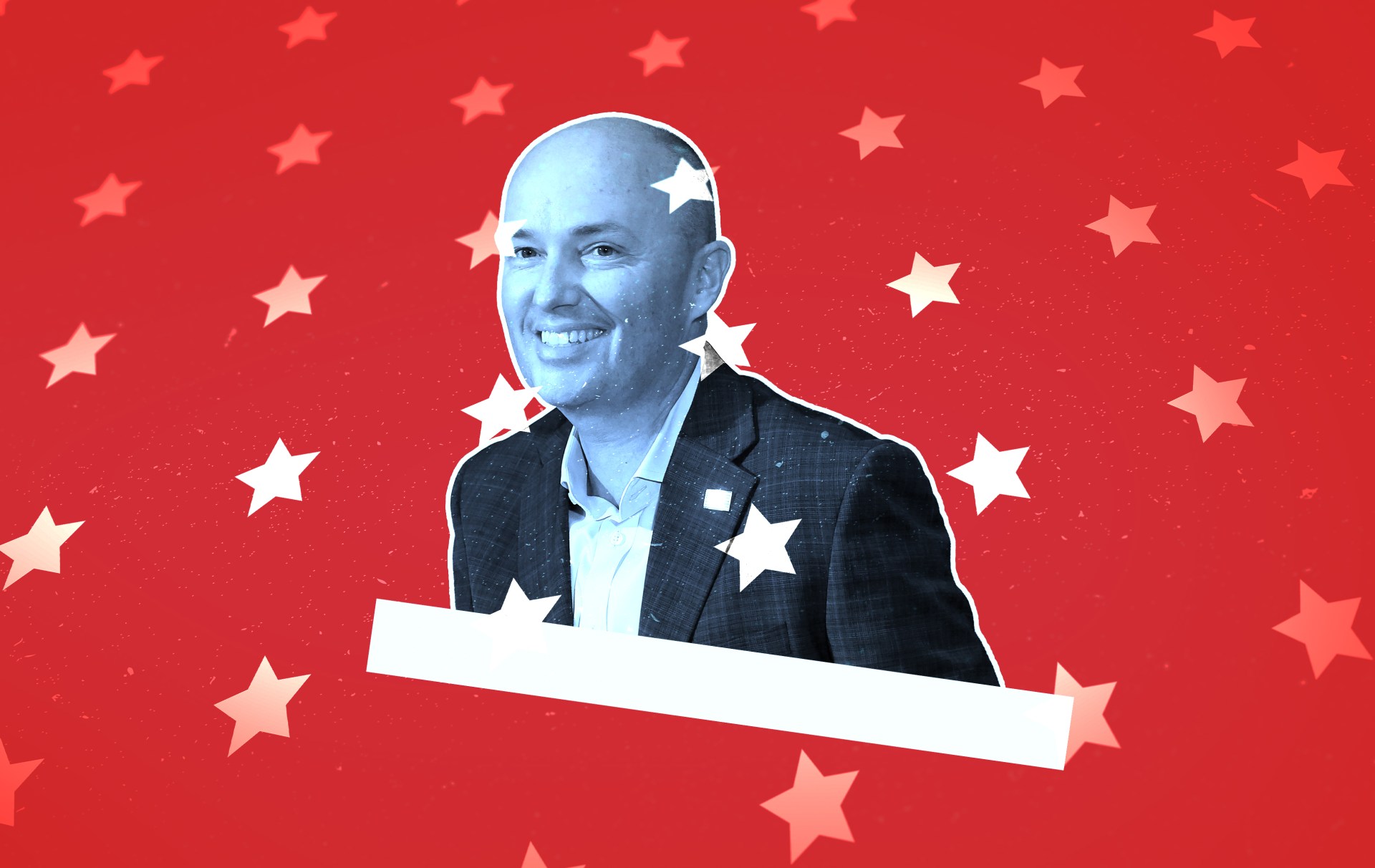


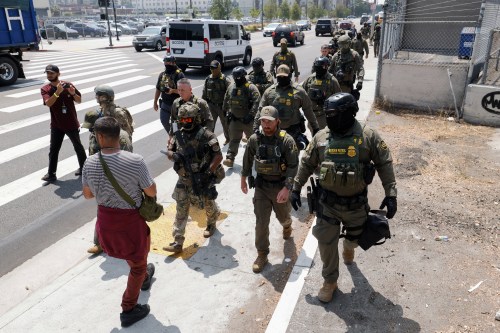

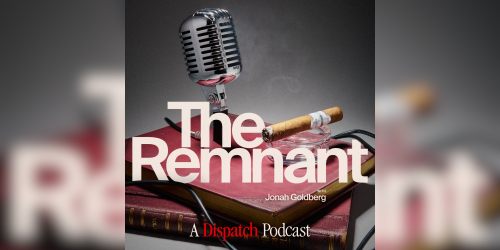





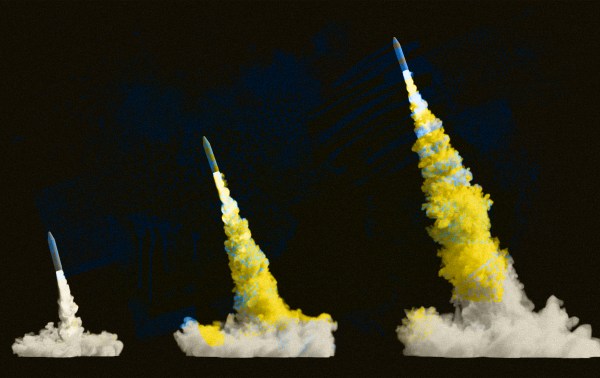
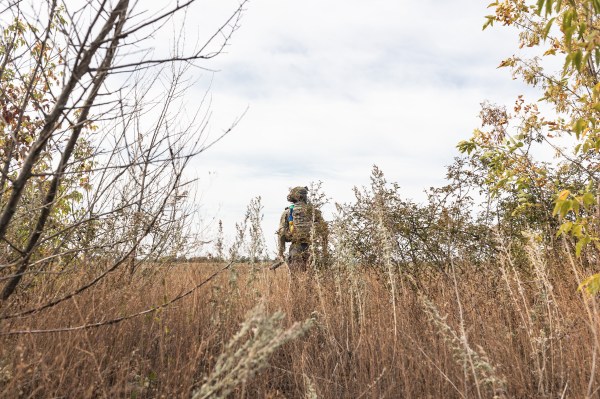

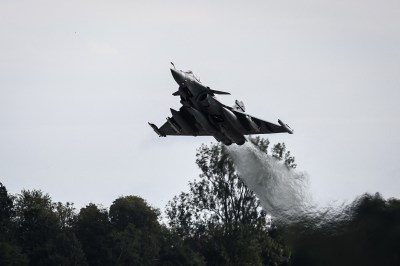
Please note that we at The Dispatch hold ourselves, our work, and our commenters to a higher standard than other places on the internet. We welcome comments that foster genuine debate or discussion—including comments critical of us or our work—but responses that include ad hominem attacks on fellow Dispatch members or are intended to stoke fear and anger may be moderated.
With your membership, you only have the ability to comment on The Morning Dispatch articles. Consider upgrading to join the conversation everywhere.